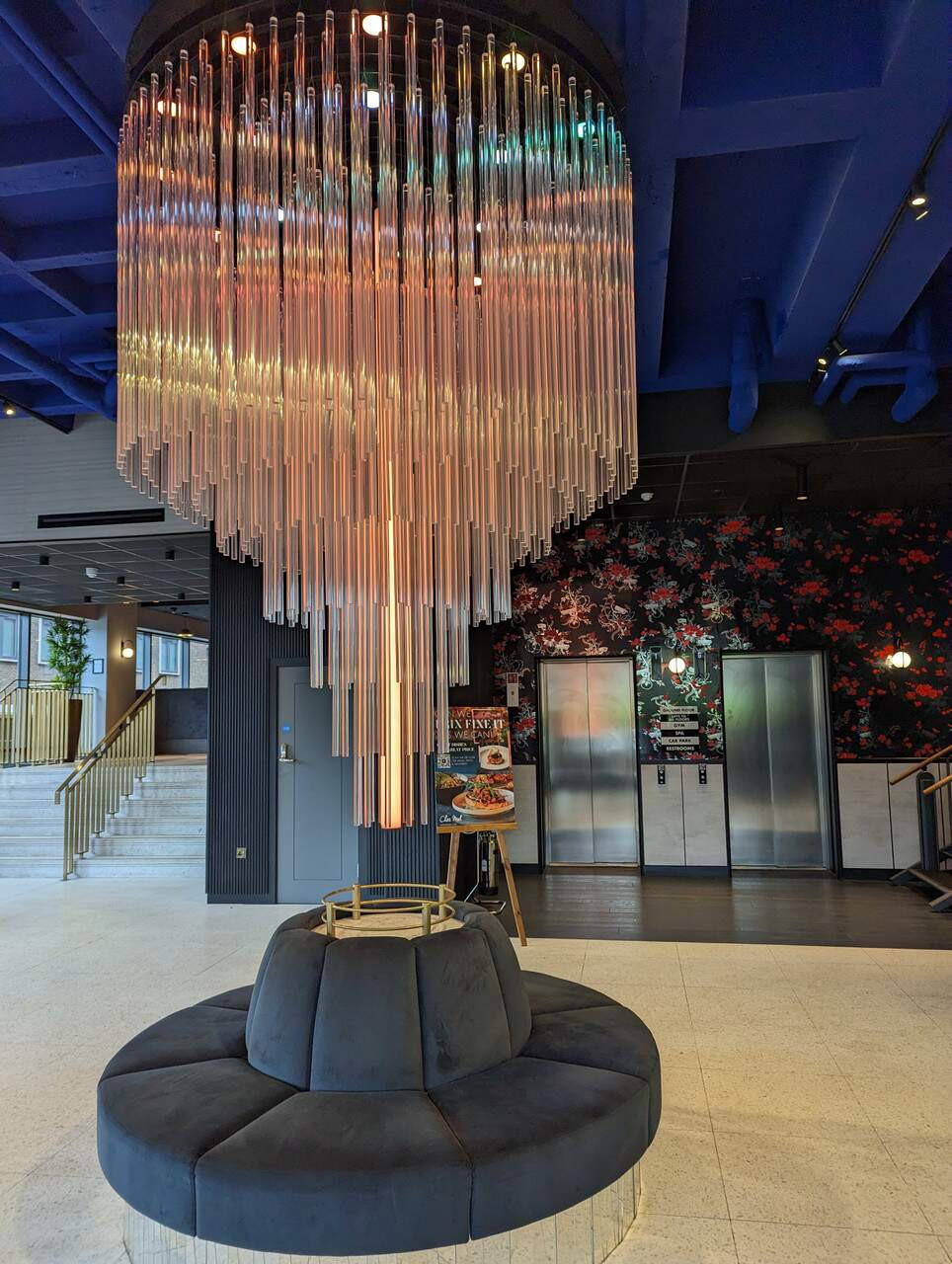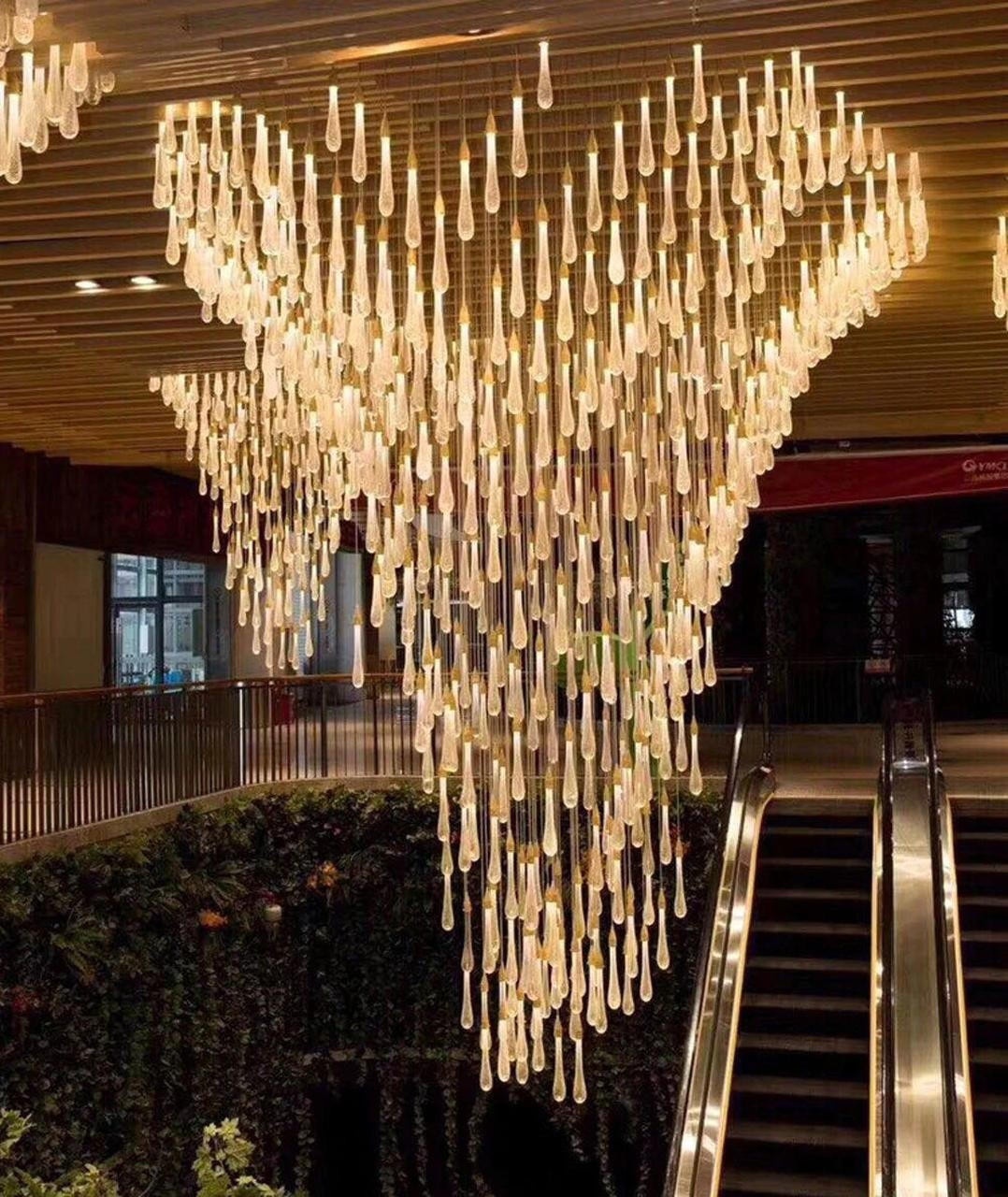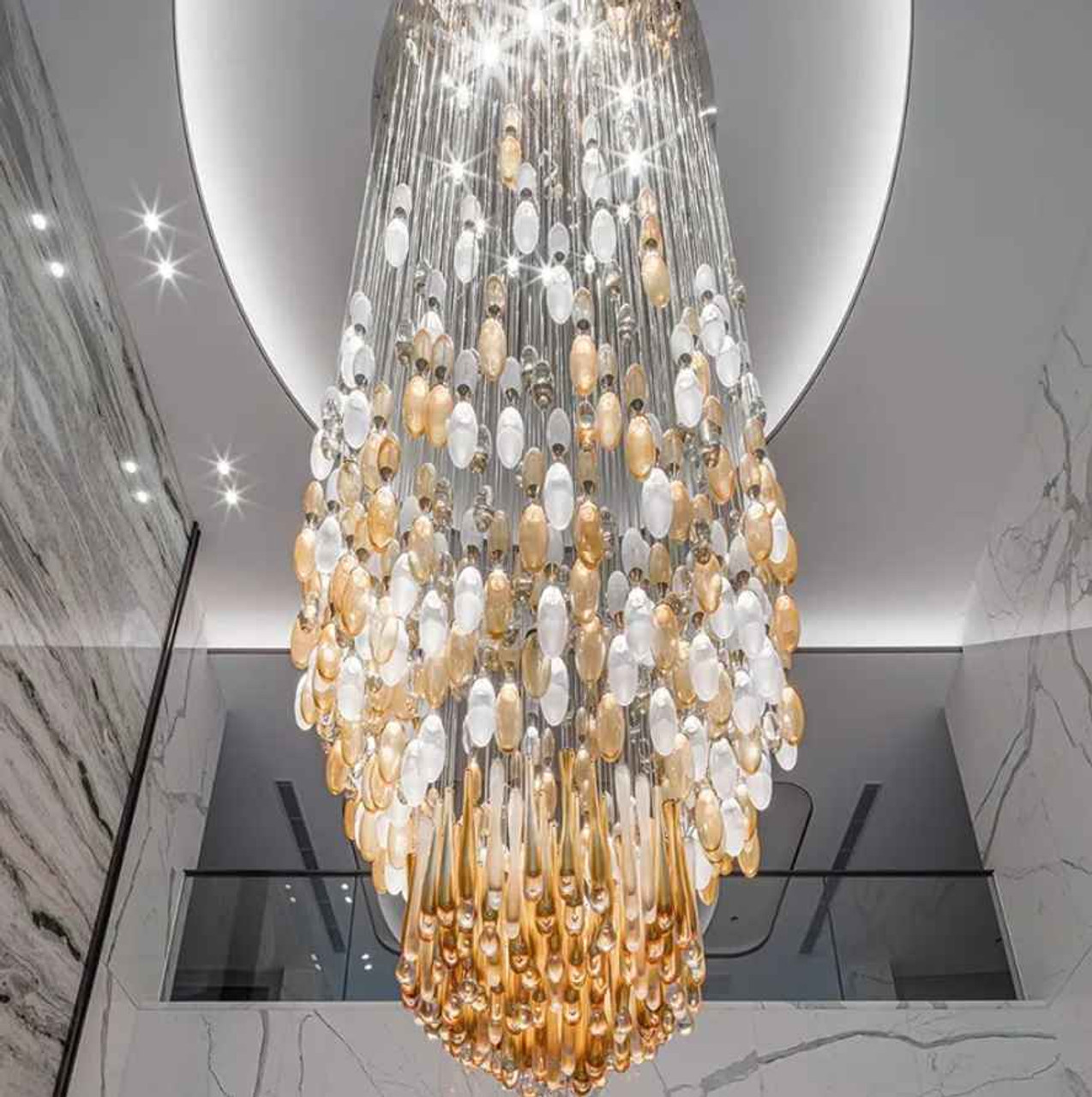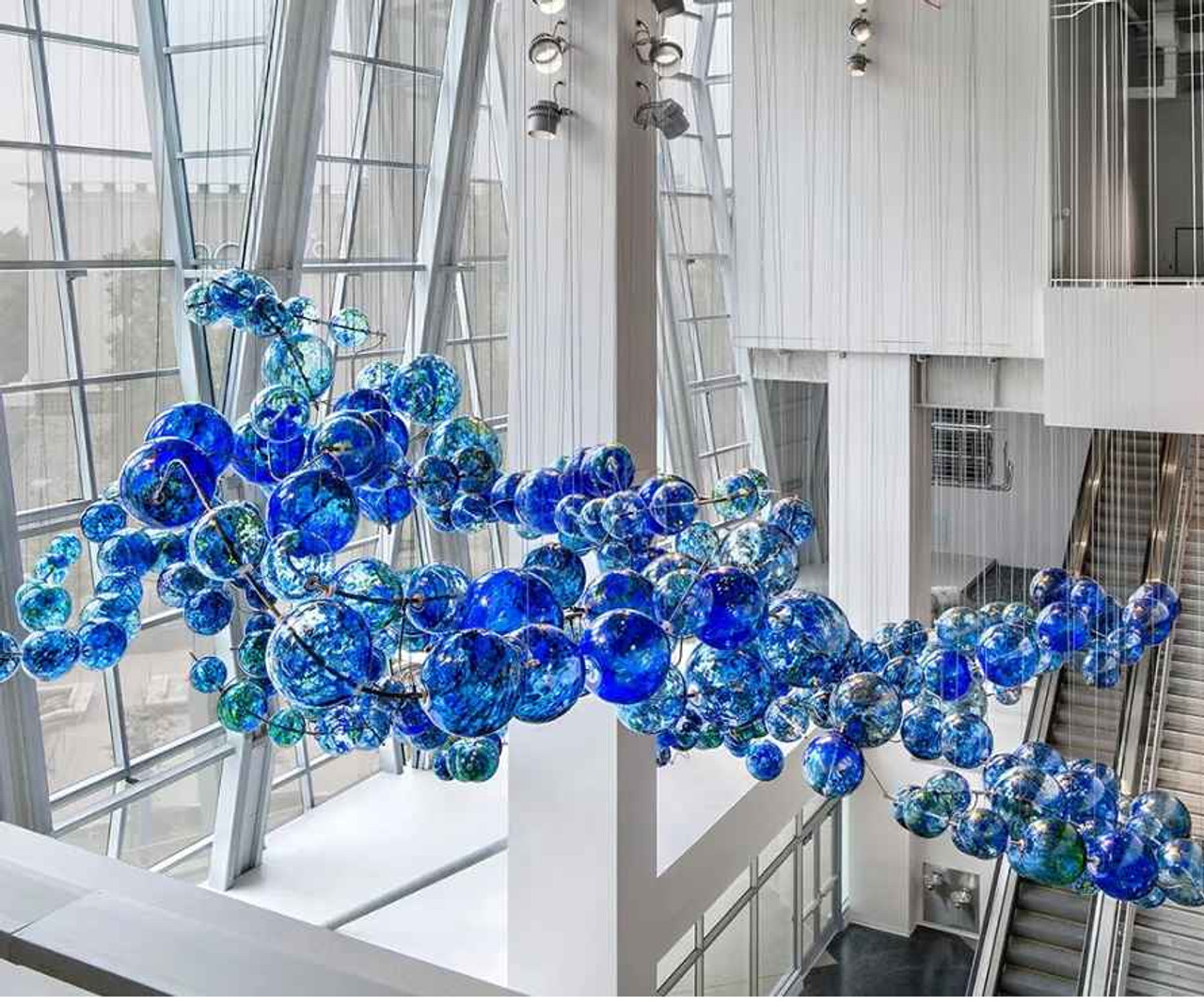Chandeliers and Customer Experience: How Lighting Influences Shopper Behavior in Retail Architecture
Posted by Bert Ron-Harding: Architectural Technologist on Sep 06, 2024
In retail architecture, lighting plays a pivotal role in shaping how customers experience the space and interact with products. Among the various lighting elements available, chandeliers are not only decorative but also profoundly functional. They set the ambiance, influence how customers perceive the store’s brand, and can even impact purchasing decisions. While it might seem that chandeliers are just for aesthetic appeal, the science of environmental psychology and consumer behavior reveals their deeper influence on shopping experiences. This article delves into how chandeliers, as part of an overarching lighting strategy, shape customer behavior, backed by scientific research into lighting and retail environments.
The Psychological Impact of Lighting
Lighting has a strong influence on human behavior, mood, and decision-making. Numerous studies in environmental psychology indicate that lighting can control how shoppers feel and, therefore, how they behave in a store. According to a study published in the Journal of Environmental Psychology, lighting influences mood and arousal levels, which in turn affects how long customers remain in a store and how they engage with the products.
Chandeliers, especially those that cast a warm, soft glow, evoke feelings of comfort, relaxation, and luxury. This creates a welcoming atmosphere that encourages customers to linger. The longer they spend in the store, the more likely they are to make a purchase, as indicated by research on consumer shopping behavior. By establishing an inviting and comfortable setting, chandeliers enhance the overall customer experience, fostering positive emotional states that directly affect sales outcomes.
Enhancing Brand Identity Through Lighting
Lighting is essential in communicating a store’s brand identity. Retailers use different types of lighting to define their space and convey specific emotions. Chandeliers, often associated with luxury and opulence, serve as significant visual markers in high-end retail environments. According to retail design theory, such elements help reinforce the notion of exclusivity and sophistication, making the products and the shopping experience feel more valuable to the customer.
A study conducted by Kotler in Atmospherics as a Marketing Tool shows that customers perceive products in a more favorable light when presented in a well-designed environment. Chandeliers can be a critical part of that environment, creating a high-end aesthetic that enhances brand identity. This form of visual merchandising works because chandeliers help articulate the store’s narrative. If the store aims to portray elegance, sophistication, or craftsmanship, the lighting must align with these values. A well-placed chandelier contributes to this image by casting everything it touches—whether products or store décor—in a luxurious light.
Focal Points and Spatial Navigation
Lighting in retail isn’t just about setting the mood; it’s also a practical tool for guiding customer movement and directing attention. Chandeliers are often used as focal points in retail spaces, marking essential areas such as entrances, checkout zones, or featured displays. Their visual prominence draws customers' eyes toward specific areas, subtly encouraging exploration of certain product zones.
Research from the Journal of Consumer Research shows that visual focal points are crucial in creating an efficient shopping path for customers. Chandeliers naturally draw attention, and by placing them strategically in the store, retailers can guide customers’ movements, helping them navigate toward areas with high-value or new products. This form of visual cueing also allows retailers to control traffic flow within the store, ensuring that no product or section is overlooked.
Perception of Value and Chandeliers
The perception of product quality is greatly influenced by the lighting in the environment where products are displayed. Chandeliers, with their opulent glow, enhance the perceived value of the products underneath them. This is especially important in luxury retail spaces where customers expect a high-end experience that justifies the higher price points. Research in the field of lighting and retail by Michael J. Baker supports the idea that store atmosphere, including lighting, directly affects the perceived quality of products. Customers often associate higher lighting quality with higher product quality, and chandeliers help reinforce this perception.
In this context, chandeliers do more than illuminate products—they act as a psychological signal to the customer that the space is exclusive, and therefore the merchandise must be, too. The atmosphere that chandeliers create is tied to how customers perceive the brand, and this perception can lead to increased spending. The creation of an exclusive and carefully curated shopping environment is often the reason why chandeliers are a key element in upscale stores.
The Effect of Lighting on Shopping Duration
How long a customer stays in a store is directly linked to how they interact with the lighting. Soft, ambient lighting, such as that from chandeliers, has been shown to encourage longer browsing times, whereas harsher, brighter lights may result in customers rushing through the store. Studies in Applied Cognitive Psychology suggest that customers who feel comfortable and relaxed in a retail environment are more likely to stay longer, explore more, and ultimately make more purchases.
In high-end retail environments, chandeliers help to slow down the shopping process. Their warm light creates a calming, leisurely atmosphere that encourages customers to take their time. As a result, they are more likely to explore the store thoroughly and consider making impulse purchases. In this way, chandeliers don’t just beautify a space—they create an experience that allows retailers to maximize their customer engagement and sales.
Emotional Engagement Through Lighting Design
The emotional impact of lighting is well-documented in environmental psychology. A study published in the Journal of Retailing and Consumer Services indicates that customers’ emotional engagement with a store is directly linked to the lighting quality. Warm, diffused light from chandeliers contributes to positive emotional states such as pleasure and comfort, both of which are critical for creating a memorable shopping experience.
In the world of retail, creating a positive emotional connection is key to ensuring customer loyalty and repeat visits. Chandeliers contribute to this emotional engagement by fostering an environment where customers feel at ease, relaxed, and valued. This emotional response can lead to increased brand loyalty and customer retention.
The Role of Chandeliers in Urban Retail Environments
Lighting plays a vital role in shaping first impressions, especially in urban environments where competition for foot traffic is fierce. Chandeliers, when used in window displays or seen through the glass storefront, can attract potential customers and increase foot traffic. This is supported by research in Retail Marketing, which indicates that well-lit, inviting storefronts are more likely to draw customers inside than poorly lit or visually unremarkable facades.
Chandeliers act as status symbols in these scenarios, creating a sense of intrigue and exclusivity. They serve as visual cues to passersby that the store offers a premium shopping experience, encouraging them to step inside. For many retailers, chandeliers are an investment in the brand’s physical and visual identity, helping them stand out in a crowded urban retail landscape.
Sustainability and Energy Efficiency in Modern Chandeliers
With the growing emphasis on sustainability in architecture and retail design, energy-efficient lighting solutions have become more important than ever. Modern chandeliers can be equipped with LED technology, which significantly reduces energy consumption while maintaining their aesthetic appeal. A study from the Energy Efficiency Journal highlights how LED lighting has revolutionized the balance between design and sustainability, allowing retailers to maintain a luxurious atmosphere while minimizing their environmental footprint.
For retailers, this means they no longer have to choose between aesthetics and sustainability. Energy-efficient chandeliers provide the best of both worlds, allowing retailers to appeal to environmentally conscious consumers without sacrificing the quality of their lighting design. This focus on sustainability also aligns with broader trends in consumer behavior, where ethical considerations are increasingly influencing purchasing decisions.
Lighting and Social Media Engagement
In today’s digital world, retail spaces are often designed with social media in mind. Chandeliers, with their dramatic and luxurious appearance, provide retailers with opportunities to create visually striking moments that customers are likely to photograph and share on platforms like Instagram. A study in The Journal of Consumer Research suggests that aesthetically pleasing retail environments can drive consumer engagement both in-store and online.
Retailers are increasingly capitalizing on this by creating "Instagrammable" areas within their stores. Chandeliers, due to their size and visual impact, are often used in these spaces to create a backdrop for customer photos. This social media engagement extends the store’s reach beyond its physical walls, turning customers into brand ambassadors who promote the store through their social media networks.
Conclusion: Lighting as a Strategic Tool in Retail Architecture
Chandeliers are much more than decorative elements in retail architecture—they are strategic tools that influence customer behavior, enhance brand perception, and improve the overall shopping experience. Scientific studies on lighting and consumer behavior consistently show that lighting affects mood, time spent in-store, and the perception of product value. Chandeliers, with their ability to combine luxury, functionality, and emotional engagement, are essential in creating a retail environment that not only attracts but also retains customers. In an increasingly competitive retail landscape, thoughtful lighting design, and particularly the use of chandeliers, will continue to play a critical role in shaping successful retail experiences.





